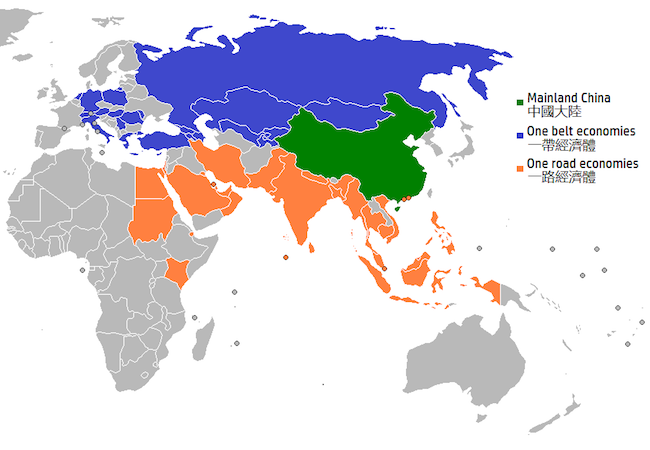BRI: Shared future for humanity

By Sabah Aslam
The terrestrial and maritime connectivity proposed by the Chinese government back in 2013 with six connectivity corridors reflects the vision of shared future for humanity. Belt and Road Initiative (BRI) is an omen of modern transformation of the globe. The journey of transition from geo-politics to geo-economics is itself a huge achievement. As geo-economics brought in the partnership and collaboration for mutual gains whereas geo-politics reflects competition, for instance, arm race.
BRI a network of terrestrial and maritime passages encompassing (1) the New Eurasian Land Bridge connects Western China to Western Russia; (2) the China-Mongolia-Russia Corridor, from Northern China to Eastern Russia; (3) the China-Central Asia-Western Asia Corridor, links China to Turkey; (4) the Corridor from Southern China to the Indochinese peninsula up to Singapore; (5) the China-Pakistan Economic Corridor; and (6) the Bangladesh-China-India-Myanmar Corridor. In other words BRI is one of the longest connectivity route from the Chinese coast to Singapore to Gwadar up to the Mediterranean. Among all the above mentioned projects, CPEC is a model project with so much in its credit.
CPEC is the flagship project of the Belt & Road Initiative. CPEC is a mutually agreed initiative including 4 key areas of cooperation i.e. energy projects, infrastructure development, Gwadar Port, and industrial cooperation. This cooperation has further strengthened the time tested friendship. China – Pakistan strategic cooperation is an essential ingredient for the South Asian peace recipe. CPEC, not merely focus on commerce and trade but also include social development projects as well. Pak-China Friendship Hospital, Pak-China School, Gwadar Airport, and many more are prominent examples of this initiative. The first phase of CPEC is almost complete and is all ready to enter into the second phase. The first phase was comprised of energy and road projects whereas the second phase might also entails agriculture, education, health, water and much more. Here in our case, when there is an atmosphere of non-kinetic threats, development is the only option. Internal harmony and peace can only be achieved when there is no sense of deprivation. In addition, inclusion of third party in CPEC project, and also connecting it with the Central Asian Republics and Russia is also a progressive move. Opening it for the private business sector and creating 80,000 jobs, all are signs of social uplifting and gradual development. CPEC is an inclusive project for Pakistan and for the region.
China is focusing on and playing a key role in connecting the continents. Being an emerging power, China, considers the role of regional connections vital for the global peace and prosperity. Hence, BRI is a positive-sum cooperation. It’s a platform for dialogue, and developing new paths of cooperation encompassing government to government, people to people, business to business and media to media relations. BRI is the, opening up and connectivity, with an aim on promoting global peace and cooperation, and building a global community with a bright future for mankind. Moreover, it promotes connectivity through passages of commerce and trade. There is also a shift in the international balance, leaning towards east from west, considering it a breath of fresh air. Belt and Road Initiative is turning the myth “21stCentury is the Asian Century” into reality.
BRI is a network of exchange, exchange of happiness and prosperity, exchange of knowledge and technology, exchange of expertise to perform well for mutual interests. It is the beginning of the inclusive global future. Hence, it is the time for profound change and reforms. For growth, for being dynamic, change is normal. So, reforms, propel states to accomplish goals not only at national level but international level too. The way BRI brought countries and regions together, enhancing trade, developing state of the art infrastructure, boosting investment, strengthening cultural ties, and people to people exchanges, all making BRI, the Central Nervous System of the world.
The true essence of BRI is regional integration, a horizontal, non-vertical integration with no hegemonic designs with an aim to limit the world recession damage. Furthermore, as the second BRI forum is scheduled in late April this year, there is much more to come. As mentioned, BRI is a pie, having share for all; it’s not a debt trap. In order to win the confidence of all the partnering states, and to lessen the suspicion, China is trying to avoid the ‘debt traps’. Though, there is no such state in unsustainable Chinese government debt pressure. It basically provides equality based cooperation, and a green & sustainable development. Second BRI forum is the right time to kickstart the “Second Phase” of Belt & Road. Many foreign heads of state and government, and thousands of delegates will be attending the Belt and Road Forum for International Cooperation, or BRF. As mentioned by Chinese Foreign Minister Wang Yi, “it will include a series of events, such as leaders’ round table, high-level meeting, and thematic forum, CEO conference, under the theme of Belt and Road cooperation shaping a brighter shared future.
There will also be more side events, including 12 thematic forums focusing on practical cooperation, and for the first time a conference organized specifically for the business community”. The globe has already been struck by two major economic depressions. Asian continent also faced one in 1997 when East and Southeast Asia was crippled economically. The world direly needs a remedy in order to sustain the global economy which can only be done through economic and cultural interconnectivity. BRI aims to be a torch bearer in order to bring the financial benefits to the globe. The global prosperity is need of an hour in modern world order but this can be achieved through collective efforts.
Sabah Aslam is the Founder & Executive Director of Islamabad Institute of Conflict Resolution (IICR), and member visiting faculty Dept. of Peace & Conflict Studies, NUML, and School of Politics & IR, Quaid-I- Azam University, Islamabad.




